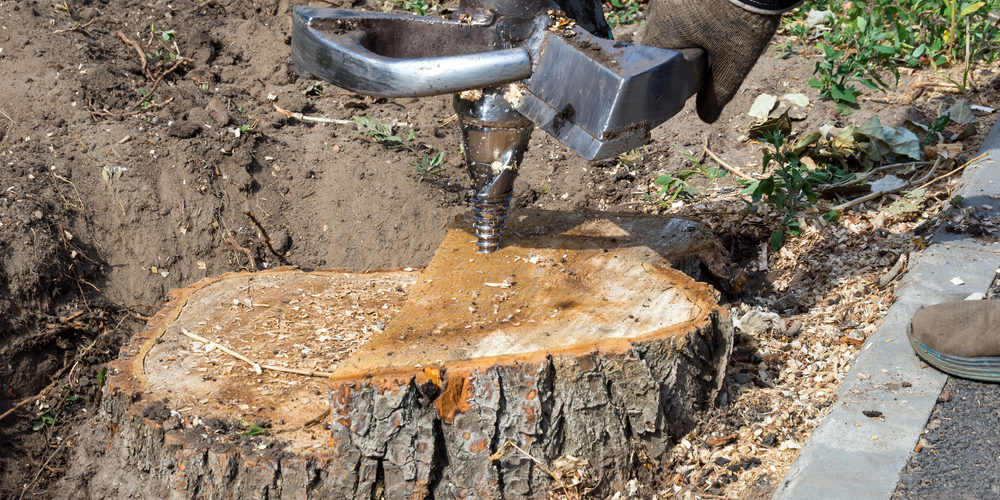Removing a stump cheaply and effectively often involves a bit of DIY effort, as professional stump removal services can be expensive.
Here are several cost-effective methods you can consider, each with its own set of pros and cons…
1. Manual Removal
Best for: Small or medium-sized stumps with shallow root systems.
- Tools Needed – Shovel, mattock, axe, saw, and possibly a winch.
- Process – Dig around the stump to expose the roots, cut the roots with an axe or saw, and use a mattock to loosen the soil and remove the roots. For larger stumps, a winch may be used to pull it out.
- Pros – Immediate results; only costs are for tool rental or purchase if you don’t already own them.
- Cons – Labor-intensive and time-consuming.
2. Chemical Decomposition
Best for: Those who can wait several months for the stump to decompose.
- Materials Needed – High-nitrogen fertilizer, potassium nitrate stump remover, or Epsom salt.
- Process – Drill holes into the stump, fill them with the chemical, add water, and cover the stump with a tarp. Over time, the chemical accelerates the decomposition of the stump.
- Pros – Minimal physical effort; chemicals are relatively inexpensive.
- Cons – Takes months to work; chemicals may have environmental impacts.
3. Burning
Best for: Areas where burning is allowed and safe to perform.
- Materials Needed – Drill, potassium nitrate stump remover (optional), and fuel (kerosene or charcoal).
- Process – Drill holes into the stump, optionally fill with potassium nitrate, and soak with fuel. Ignite and monitor the fire until the stump is consumed.
- Pros – Effective at removing the stump; materials are cheap.
- Cons – Safety risks; not permitted in all areas due to fire hazards or environmental regulations.
4. Rotting with Epsom Salt
Best for: Environmentally conscious individuals; those looking for a natural method.
- Materials Needed – Epsom salt and water.
- Process – Drill holes into the stump, fill with Epsom salt, add water, and cover with a tarp. The salt dehydrates the stump, accelerating its decay.
- Pros – Eco-friendly; Epsom salt is inexpensive.
- Cons – Can take a year or more to fully decompose the stump.
5. Using a Stump Grinder
Best for: Those who prefer a faster, more mechanical method.
- Process – Rent a stump grinder from a local home improvement store or tool rental shop, and use it to grind the stump below ground level.
- Pros – Quick and effective; no need to wait for decomposition.
- Cons – Rental cost, although cheaper than hiring a professional service; requires some physical effort and proper safety precautions.
Tips for Effective Stump Removal
- Safety First – Always take appropriate safety precautions, especially when using power tools or fire.
- Check Local Regulations – Before burning or using chemicals, check local regulations to ensure compliance.
- Consider the Aftermath – Be prepared to fill the hole left by the stump with soil and possibly sow grass seed to restore the area.
Each method has its advantages and suits different situations based on the stump size, your budget, and how quickly you need the stump removed.






